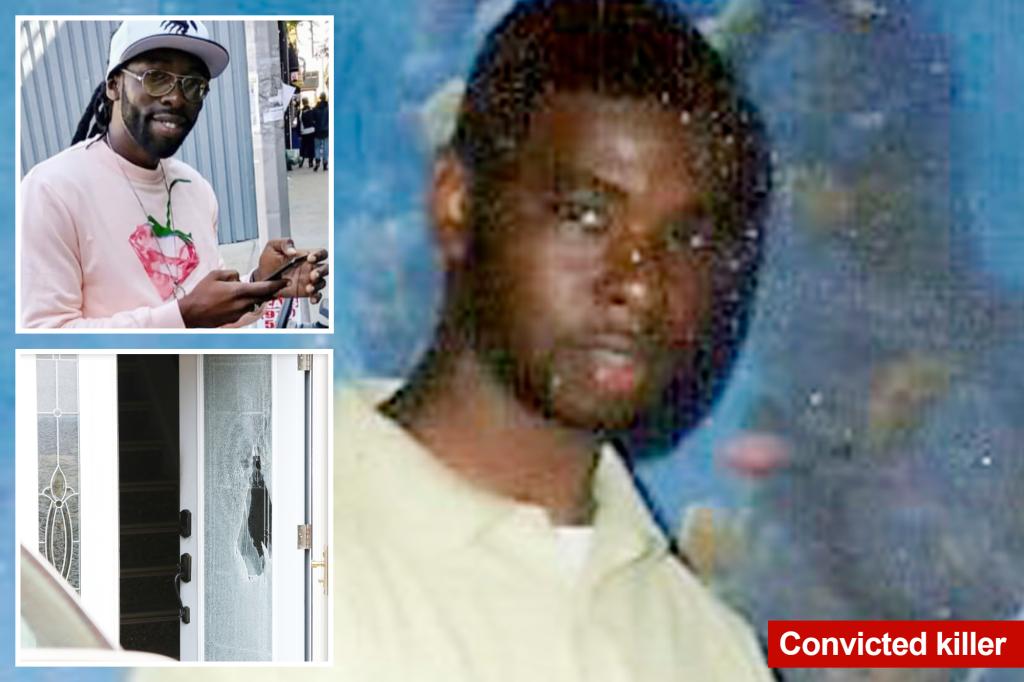World
Ex-con charged with shooting Bronx dad over parking spot did time for 1997 upstate murder

A Troubling History of Violence: The Case of Lavar Davis
Lavar Davis, a 46-year-old Brooklyn resident, is once again behind bars, this time for allegedly murdering Trevor Hughes, a beloved Bronx father of four, over a parking dispute. This tragic incident is not Davis’s first brush with the law. His violent past includes a 24-year prison sentence for the cold-blooded killing of 22-year-old Floyd Berkley in Schenectady nearly three decades ago. Davis’s history of deadly violence has left communities shattered and raised questions about the criminal justice system’s ability to rehabilitate offenders and prevent recidivism. This article delves into Davis’s troubled past, the circumstances of the recent crime, and the broader implications of his actions.
A Deadly Past: The 1997 Schenectady Murder
In 1997, Lavar Davis was just 18 years old when he committed a senseless act of violence that would alter the course of his life and that of Floyd Berkley’s family forever. On November 9 of that year, Davis and his co-defendant, Yusef Ramsey, got into a brawl with Berkley in Schenectady. Ramsey allegedly assaulted Berkley, while Davis took it a step further, fatally shooting the young man. Following the murder, Davis attempted to evade law enforcement by fleeing the area with the help of a friend who provided him with $300 in bus fare. However, his escape was short-lived, as authorities eventually apprehended both Davis and Ramsey.
Davis later pleaded guilty to second-degree murder in Berkley’s death, a decision that led to a lengthy prison sentence. Ramsey, too, faced justice, though his role in the crime was different. He pleaded guilty to hindering prosecution and assault, part of a plea deal that included his cooperation with authorities. Schenectady Deputy Chief Assistant District Attorney Philip Mueller noted at the time that Ramsey’s cooperation was crucial in securing Davis’s conviction. For his part, Davis spent nearly a quarter of a century behind bars before being paroled on March 11, 2021. His release from prison marked the beginning of a new chapter, but it would not be long before he found himself embroiled in another deadly conflict.
A Second Tragedy: The Bronx Parking Dispute
Less than two years after his parole, Lavar Davis’s name reemerged in the headlines, this time for the tragic death of Trevor Hughes, a hardworking Bronx father of four. The incident occurred in the early hours of a Sunday morning, when Davis and his girlfriend parked their car outside Hughes’s home, blocking the victim’s parking spot. What began as a minor dispute over parking escalated into a violent confrontation.
According to the NYPD, Davis and Hughes engaged in a scuffle, which quickly turned deadly. Bronx prosecutors allege that Davis shot Hughes to death, leaving the victim’s girlfriend badly beaten in the process. The senseless act of violence has sent shockwaves through the community, reigniting debates about gun violence, conflict resolution, and the criminal justice system’s ability to prevent recidivism. At his arraignment, Bronx Assistant District Attorney Lawrence Rozenblum highlighted Davis’s extensive criminal history, including a separate conviction for first-degree assault in Schenectady, which had resulted in a concurrent sentence of 10 to 20 years in prison. This case involved the shooting of another Brooklyn man, 18-year-old Franklin Hemingway, further underscoring Davis’s troubling history of violence.
The Bigger Picture: A Cycle of Violence and Systemic Questions
Lavar Davis’s case raises difficult questions about the criminal justice system’s approach to rehabilitation and the factors that contribute to recidivism. His parole in 2021, after serving 24 years for murder, was intended to mark his reintegration into society. Yet, his involvement in another deadly altercation suggests that the system may have failed to address the underlying issues that led to his initial crime. While Davis’s actions are undoubtedly his own responsibility, his case highlights the challenges of rehabilitating individuals with a history of violent behavior.
The victims of Davis’s violence—Floyd Berkley, Franklin Hemingway, Trevor Hughes, and their loved ones—reveal the human cost of his actions. Their stories underscore the need for a more comprehensive approach to addressing violence, one that includes not only punishment but also prevention, rehabilitation, and support for both offenders and victims’ families. As the legal system grapples with Davis’s latest charges, the broader community must confront the root causes of such tragedies and work toward creating safer, more just communities for all.
Conclusion: Reflections on Justice and Accountability
Lavar Davis’s story is one of recurring violence and missed opportunities for rehabilitation. His actions have caused irreparable harm to multiple families and communities, leaving behind a trail of grief and unanswered questions. While the legal system will ultimately determine his fate in the wake of the Bronx shooting, the broader societal lesson lies in the need for a more holistic approach to addressing crime and its consequences. By examining the systemic factors that contribute to recidivism and working to address them, society can take steps toward preventing such tragedies in the future. For now, the families of Floyd Berkley and Trevor Hughes—and all those affected by Davis’s actions—can only hope for justice and healing in the face of unimaginable loss.











